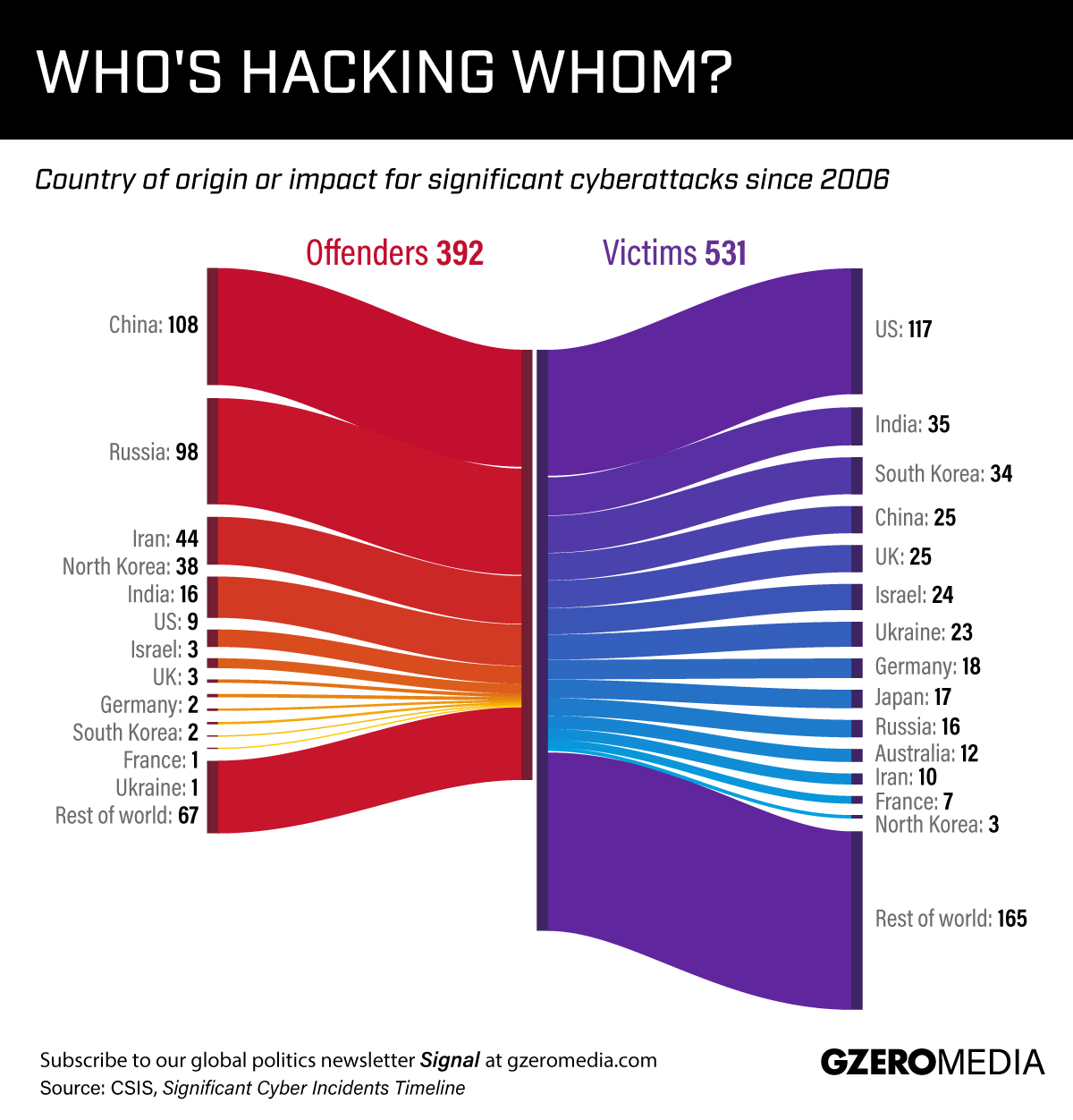It's no secret that cyberattacks are becoming more commonplace. But where do most of them originate and what countries do they target most? The graphic above shows the most significant offenders and victims since 2006. Hackers in China, Russia, Iran, and North Korea account for three-quarters of all major attacks. Nearly a fifth of attacks, meanwhile, have targeted institutions or companies in the United States.
(At least that we know of: this chart highlights known attacks on government agencies, tech companies, and other operations that caused more than $1 million in economic damage. But many cyberattacks are never disclosed, and some countries are more transparent than others, so consider this a cross-section of a much bigger — and more disturbing — picture.)
- DarkSide hack reveals risk of ransomware cyberattacks - GZERO Media ›
- Russian cyber attack could trigger NATO’s Article 5, warns NATO Deputy Secretary General - GZERO Media ›
- Podcast: Protecting the Internet of Things - GZERO Media ›
- Biden likely to push Putin on cybersecurity in Geneva meeting - GZERO Media ›
- Ranking cyber threats: CISA chief Jen Easterly - GZERO Media ›
More For You
The European Union just pulled off something that, a year ago, seemed politically impossible: it froze $247 billion in Russian central bank assets indefinitely, stripping the Kremlin of one of its most reliable pressure points.
Most Popular
Consumers are spending–just not evenly
What’s Good Wednesdays™, December 17, 2025 – holiday movie edition
Walmart’s $350 billion commitment to American manufacturing means two-thirds of the products we buy come straight from our backyard to yours. From New Jersey hot sauce to grills made in Tennessee, Walmart is stocking the shelves with products rooted in local communities. The impact? Over 750,000 American jobs - putting more people to work and keeping communities strong. Learn more here.
Of all the threats to the world, what are the top 10 most urgent global risks for 2026? On Monday, January 5, at 12 pm ET, join us for a livestream discussion with Ian Bremmer and global experts to discuss the Top Risks of 2025 report from Eurasia Group. This report will mark twenty years of Ian Bremmer’s annual forecast of the political risks that are most likely to play out over the year. Event link: gzeromedia.com/toprisks
In this episode of Tools and Weapons, Microsoft Vice Chair and President Brad Smith sits down with Ed Policy, President and CEO of the Green Bay Packers, to discuss how purpose-driven leadership and innovation are shaping the future of one of the world’s most iconic sports franchises. Ed shares how technology and community-focused initiatives, from Titletown Tech to health and safety innovations on the field, are transforming not just the game of football, but the economy and culture of Green Bay itself. He explains how combining strategic vision with investment in local startups is keeping talent in the Midwest and creating opportunities that extend far beyond Lambeau Field.
Subscribe and find new episodes monthly, wherever you listen to podcasts.
